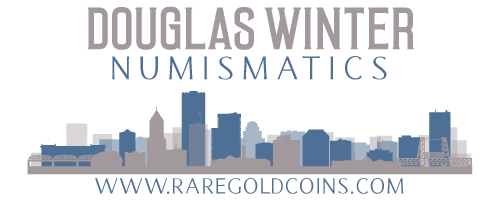May 2007 Long Beach Show Review
/With few exceptions, coin shows are, for me, places to buy. So I typically judge my success at a coin show on how much I am able to purchase and if my new coins are interesting. On both fronts, I would have to say that the recent Long Beach show was a strong success. The funny thing is, the show itself seemed pretty slow. Until a few years ago, Long Beach had a very strong collector following and I could always count on staying busy on Friday and Saturday selling coins to collectors. This has clearly changed and I’d have to say that Long Beach is pretty much over these days by Thursday afternoon; i.e., it is a primarily wholesale-oriented show.
I’ve been having trouble buying coins at the last few shows I attended so I decided that I’d make a Herculean effort to find some interesting pieces at Long Beach. And I worked liked a dog; running from table to table and looking through boxes of coins from my usual sources and some dealers who I typically do not patronize.
I didn’t realize how much I bought—or how much I liked what I bought—until I returned home and wrote up my new purchases. Some of the highlights include the following:
-
A nice group of choice New Orleans gold coins including a lovely PCGS MS62 1857-O quarter eagle and an 1850-O eagle in NGC AU55.
A very rare 1841-O eagle graded AU53 by NGC.
Some attractive Charlotte and Dahlonega half eagles ranging in price from $2,500 to over $10,000.
A dazzling Condition Census 1852-D half eagle graded MS62 by NGC.
An 1846 eagle graded MS61 by NGC which is tied for the finest graded by any service.
As for the show itself, I would have to say it was pretty marginal. There was a decent amount of wholesale business being done but there was very little fresh material available. If you were the kind of dealer who regally sits behind your table and waits for coins to come marching up, you had a terrible Long Beach. If, like me, you hustled and hustled, you may well have “bought your way out” of the overall malaise which now seems to hang over the show.
That said, a number of interesting trends became apparent at the show. The first thing I noted was that as soon as many dealers panicked and dumped large portions of their positions on generics, gold spiked upwards. The second thing is that Indian Head quarter eagles seem to be back in play after a year or so in the dumps. I sold a few better dates I had in stock (1912, 1914-D and 1915) for my full asking price to the first person I showed them to. The final thing I noted is that collector grade coins in all series remain very popular. If you had coins like scarce date Bust and Seated silver coins or better date Bust gold, you were going to sell them very easily.
I did not participate in the pre-show auctions due to lack of time and lack of interest. I spent very little time (or money, for that matter...) at the Heritage sale. I did sell a number of coins in the auction and was very pleasantly surprised at how well they did.
I am anticipating that the market will be relatively slow for the rest of the month although I do expect the Baltimore show at the end of June to be excellent. I am attending the summer version of this show for the first time ever (usually I go on vacation at the end of the June but now that I live in the Northwest I actually want to stay around!) and would urge you to do the same if you live anywhere near Baltimore.










